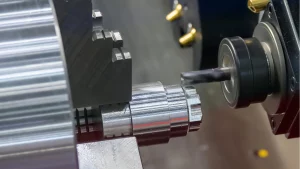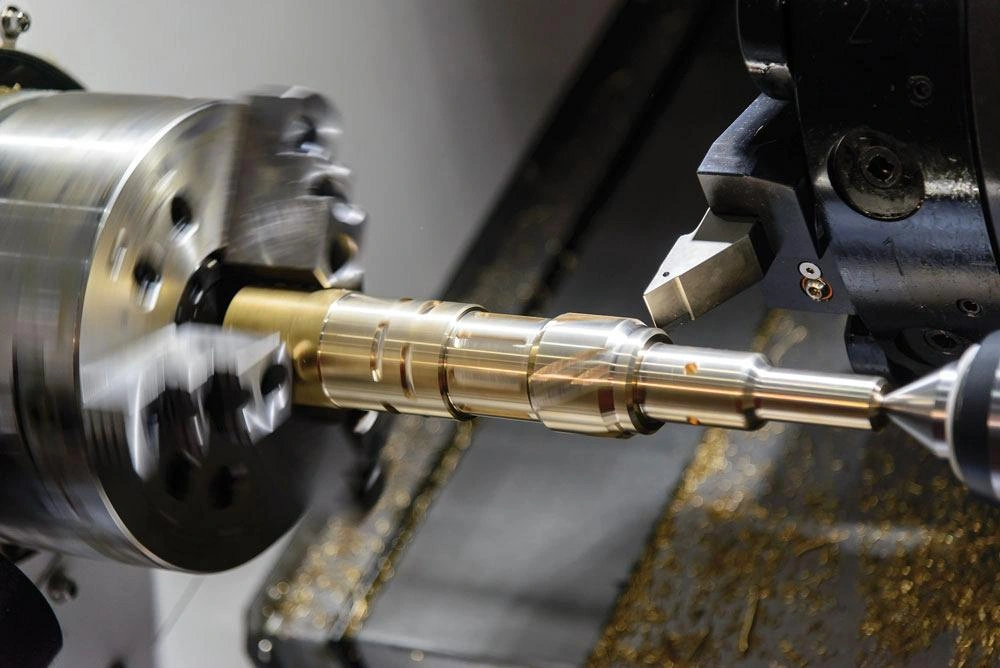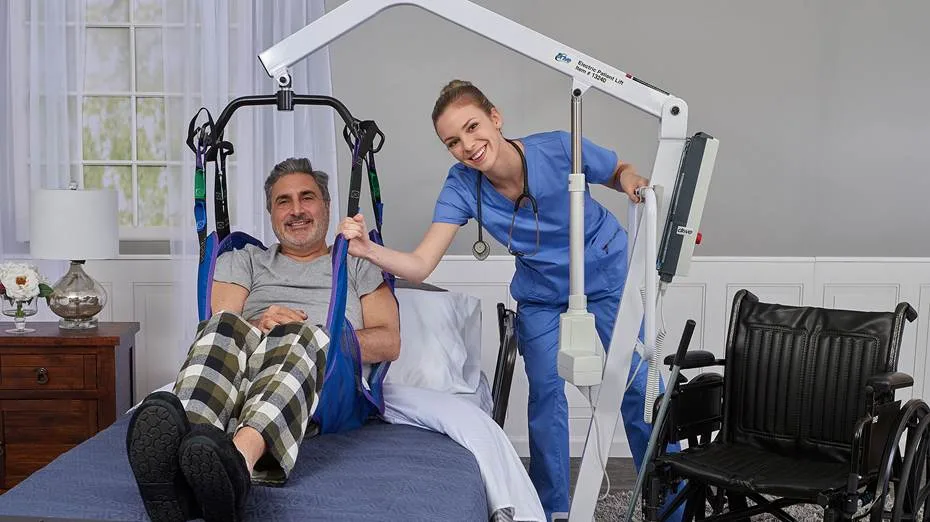Implementing innovative mechanical cutting tools is crucial for prioritizing worker health in industrial settings. These tools offer ergonomic designs, safety features, and precise cutting abilities to boost worker well-being. Following safety protocols, providing thorough training, and using proper protective gear are essential for ensuring a safe work environment. By adopting cutting-edge tools, companies not only enhance safety and efficiency but also show a dedication to their employees’ health. Understanding how these tools impact worker safety is key to improving workplace productivity and satisfaction.
Key Takeaways
- Ergonomic designs reduce strain on workers’ bodies.
- Advanced safety mechanisms prevent accidents in the workplace.
- Precision cutting capabilities enhance accuracy and efficiency.
- Durable materials ensure long-lasting performance for increased productivity.
- Prioritizing worker health with modern tools leads to a safer work environment.
Understanding the Importance of Innovative Cutting Tools
Within the domain of worker health and safety, the importance of advanced cutting tools cannot be overstated. These tools not only improve efficiency but also decrease the risk of accidents and injuries in the workplace. By integrating cutting-edge cutting tools, companies show a dedication to prioritizing employee well-being. Investing in state-of-the-art equipment demonstrates a proactive approach to guaranteeing a safe and productive work environment.
Key Features of Innovative Mechanical Cutting Tools
In the domain of worker health and safety, grasping the vital characteristics of modern mechanical cutting tools is essential for improving workplace efficiency and minimizing potential hazards. Key features include ergonomic designs for reduced strain, advanced safety mechanisms to prevent accidents, precision cutting capabilities for improved accuracy, and durable materials for long-lasting performance. Understanding these features is fundamental in selecting tools that prioritize both worker well-being and productivity.
Safety Guidelines for Using Cutting Tools
Implementing strict safety guidelines is crucial when utilizing cutting tools in the workplace to safeguard the well-being of workers and prevent potential accidents. Proper training, maintenance of tools, wearing appropriate personal protective equipment, and following manufacturer instructions are paramount components of safe tool operation. Regular inspections, risk assessments, and creating a culture of safety awareness further contribute to a secure working environment when using cutting tools.
Benefits of Implementing Innovative Tools
Implementing advanced cutting tools in the workplace offers a dual advantage of improved workplace safety and upgraded work efficiency. These tools are designed to decrease the risk of accidents and injuries while also simplifying the cutting process, leading to increased productivity. By embracing cutting-edge tools, companies can create a safer and more efficient working environment for their employees.
Enhanced Workplace Safety
By incorporating state-of-the-art mechanical cutting tools into the workplace, significant advancements in safety protocols are achievable. These tools offer features like automatic shut-off mechanisms, blade guards, and ergonomic designs to minimize the risk of accidents. Improved workplace safety boosts employee well-being, reduces downtime because of injuries, and nurtures a culture of care and responsibility. Investing in cutting-edge tools demonstrates a dedication to creating a secure work environment for all team members.
Improved Work Efficiency
Improved job efficiency is a direct result of integrating advanced cutting tools into the workplace environment. These tools streamline processes, reduce downtime, and boost overall productivity. By leveraging cutting-edge technologies in cutting tools, tasks are completed faster and with higher precision. This not only increases the output of workers but guarantees that projects are completed in a timely manner, meeting deadlines effectively.
Enhancing Worker Health With Modern Cutting Tools
How can modern edging implements contribute to enhancing the health and safety of workers in various industries? Modern cutting tools with ergonomic designs and safety features like blade guards and vibration reduction mechanisms can significantly reduce the risk of repetitive strain injuries and accidents. By prioritizing worker health in tool design, companies can create a safer work environment, leading to increased productivity and employee satisfaction.
Training Programs for Efficient Tool Usage
Training programs tailored to the specific needs of workers are instrumental in ensuring efficient usage of modern cutting tools in various industries. These programs should cover topics such as tool operation, safety protocols, maintenance procedures, and troubleshooting techniques. By providing thorough training, organizations can empower their employees to utilize cutting-edge cutting tools effectively, leading to increased productivity and reduced risks of accidents or errors.

Maintenance Tips for Longevity and Safety
Ensuring the longevity and safety of advanced cutting tools requires careful adherence to prescribed maintenance protocols and regular inspections. Proper cleaning, lubrication, and storage are necessary for best performance. Regularly inspect cutting edges for wear and damage, and replace as needed. Follow manufacturer guidelines for sharpening or replacing blades. Training on correct maintenance procedures is vital for worker safety and tool longevity.
Case Studies on Successful Tool Implementations
The implementation of state-of-the-art cutting tools in real-world scenarios can provide valuable insights into their effectiveness. By analyzing case studies on successful tool implementations, we can understand the tangible impact these tools have on worker health and safety. Examining the practical applications and outcomes of these tools is essential for optimizing their usage and enhancing workplace conditions.
Real-world Tool Applications
Through meticulously documented case studies, we reveal the practical applications of advanced cutting tools in real-world scenarios. These studies highlight how groundbreaking mechanical cutting tools have transformed industries like aerospace, automotive, and manufacturing. From precise cutting in aircraft assembly to effective material removal in automotive production, these tools have greatly boosted productivity and worker safety. Analyzing these real-world applications offers valuable insights for optimizing tool usage in different work environments.
Impact of Tool Usage
Implementing advanced mechanical cutting tools has shown significant success in enhancing productivity and worker safety across various industries. Case studies reveal a marked reduction in workplace injuries and improved efficiency because of the precise cutting capabilities of these tools. Companies report increased employee morale and reduced operational costs, highlighting the positive impact of utilizing cutting-edge cutting tools for both worker health and overall business performance.
Addressing Common Challenges in Tool Adoption
When adopting new tools, organizations often encounter various typical challenges that require strategic solutions for successful implementation. Common challenges include resistance to change, lack of training, compatibility issues with existing systems, and initial costs. To address these hurdles effectively, companies should invest in thorough training programs, conduct in-depth compatibility assessments, and create a clear roadmap for the tool adoption process. Strategic planning and communication are key to overcoming these obstacles.
Future Trends in Mechanical Cutting Tools
As we look towards the future of mechanical cutting tools, it becomes vital to analyze the advancements in cutting technology and their direct impact on worker safety. Understanding how these innovations shape the scenery of workplace safety is important for companies striving to improve their operational standards and protect their workforce. By exploring the evolving trends in mechanical cutting tools, organizations can proactively adapt to guarantee a safer and more efficient working environment.
Advancements in Cutting Technology
What future trends in mechanical cutting tools are shaping the field of advancements in cutting technology today? Innovations like laser cutting, waterjet cutting, and abrasive waterjet cutting are becoming increasingly popular because of their precision and efficiency. Moreover, advancements in materials used for cutting tools, such as carbide and ceramic composites, are enhancing durability and performance. These advancements are revolutionizing the industry, offering more efficient and effective cutting solutions.
Impact on Worker Safety
With the increasing adoption of advanced mechanical cutting tools in various industries, it is vital to examine their impact on worker safety, focusing on future trends in enhancing workplace health and well-being. Future advancements in cutting technology aim to prioritize worker safety by reducing ergonomic strain, enhancing precision, and incorporating safety features to minimize the risk of accidents and injuries in the workplace.
Frequently Asked Questions
How Do Innovative Mechanical Cutting Tools Impact Worker Productivity and Efficiency?
Cutting-edge mechanical cutting tools can significantly impact worker productivity and efficiency by enhancing precision, speed, and safety in various tasks. These tools streamline processes, reduce downtime, and improve overall output, leading to a more effective and efficient work environment.
What Are Some Common Misconceptions About Using Modern Cutting Tools in the Workplace?
Some common misunderstandings about using modern cutting tools in the workplace include worries about safety risks, upkeep expenses, and ergonomic impacts. Addressing these misunderstandings through appropriate training, maintenance protocols, and ergonomic assessments is essential.
Can Innovative Cutting Tools Improve Worker Safety and Reduce the Risk of Accidents?
Creative cutting tools have the potential to greatly boost worker safety by enhancing accuracy, efficiency, and control. By minimizing human error and simplifying tasks, these tools can help reduce accidents and foster a healthier work environment.
Are There Specific Industries or Sectors That Can Benefit the Most From Implementing Innovative Cutting Tools?
Certain industries like manufacturing, construction, and aerospace stand to gain significantly from integrating state-of-the-art cutting tools. These sectors rely heavily on precision cutting tasks, where advanced tools can boost efficiency, accuracy, and ultimately contribute to improved worker safety and productivity.
How Do Advancements in Technology Play a Role in the Development of Modern Cutting Tools?
Advancements in technology significantly impact modern cutting tools by enabling precision, efficiency, and safety improvements. Integration of smart sensors, automation, and ergonomic designs optimizes tool performance, reducing worker fatigue and health risks. This synergy underscores the vital role technology plays in tool evolution.
Conclusion
In the e, the utilization of e mechanical cutting tools is e for enhancing worker health and safety in various work settings. By understanding the key features, safety guidelines, benefits, and maintenance tips associated with these tools, professionals can optimize their usage to promote a safe and healthy working environment. Through case studies and a focus on future trends, it is evident that the adoption of modern cutting tools plays a c role in improving workplace efficiency and well-being.
You May Also Like:








